Tour of the City of David and First Temple Period Jerusalem
What We See in the City of David / The Stories and Controversies of the Archeology of the City of David
The City of David is the original Jerusalem. It predates David, but is the place that David made his capital when he defeated the Jebbusites. David ruled first in Hebron for 7 years, and then moved his capital to Jerusalem in about 1000 BCE.
The City of David was forgotten for centuries and is outside the walls of the Old City of Jerusalem. The walls of the Old City were built only about 500 years ago.
There have been tremendous archeological discoveries and excavations in just the last decades.
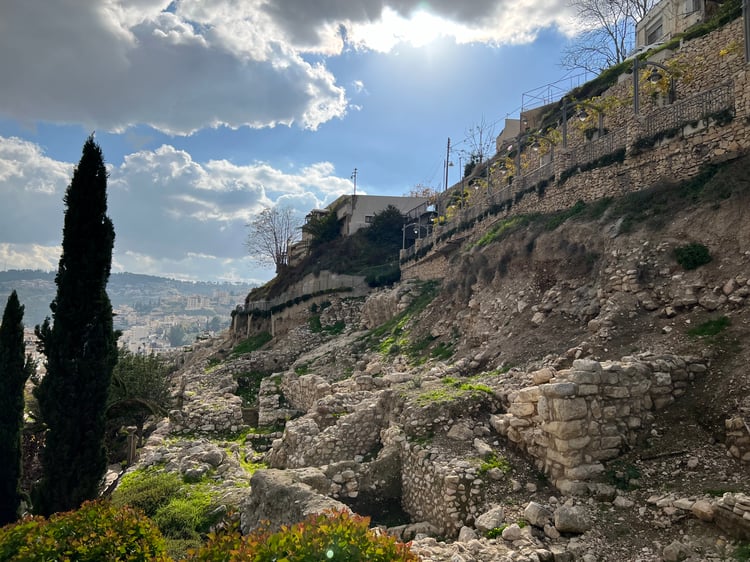
Scenic Overlook
From the overlook you can see the Mount of Olives and the burial places there, including burial tombs from the First Temple Period.
From this point you can also see The Hill of Evil Counsel, also known as Ras al-Tor, is a prominent hill located just opposite the Mount of Olives in Jerusalem. This historical site holds great significance as it is believed to have been the location of the Hill Evil Counsel mentioned in the New Testament. According to biblical accounts, it is on this hill that the high priest Caiaphas and other Jewish leaders conspired to arrest Jesus. The name "Hill of Evil Counsel" originates from this infamous plot that led to Jesus' crucifixion. Today, visitors can stand at the overlook and gaze upon the Mount of Olives, its burial tombs, and reflect upon the significant events that unfolded on this hill during the First Temple Period. The Hill of Evil Counsel serves as a reminder of the complex and intricate history that intertwines the religious, political, and cultural aspects of Jerusalem, making it a must-visit destination for history enthusiasts and spiritual seekers alike.
From here you can also see how the city can only grow westward because it is valley and cemetery limit growth to the east because of the cemetery. It can’t grow north because the Temple and other buildings are there. It can’t grow south because of the Kidron Valley. So it has to grow west.
Important Administrative Building of the City of David
Approx 1000 BCE
Site where bullae with names connected to the House of David. There are different ways to interpret what's found in this building, and there are those who would like to think that it is the fortress of King David discussed in the Bible, but there are reasons to question this.
It seems clear that the building that was there was an administrative building of some importance based on the bullae found there.
Ruins Between Towers Near the Entrance of the City of David
c. 1000 BCE
Many bullae were found here as well. However what's most interesting is probably the remains of what is possibly the first "toilet" in history. At the bottom traces of "matter" were found which were analyzed to contain parasitic worms. This lead archeologists to conclude that the people living there did not have time to cook their meat well .
Also they found pollen spores that were from weeds or other vegetation that is not usually eaten by humans.

Overlook of the Burial Place of Shev Nayahu
c. 1000 BCE
Shev Nah, Asher Al HaBayit. in Isaiah he is criticized for making himself an impressive tomb.
See Isaiah 22
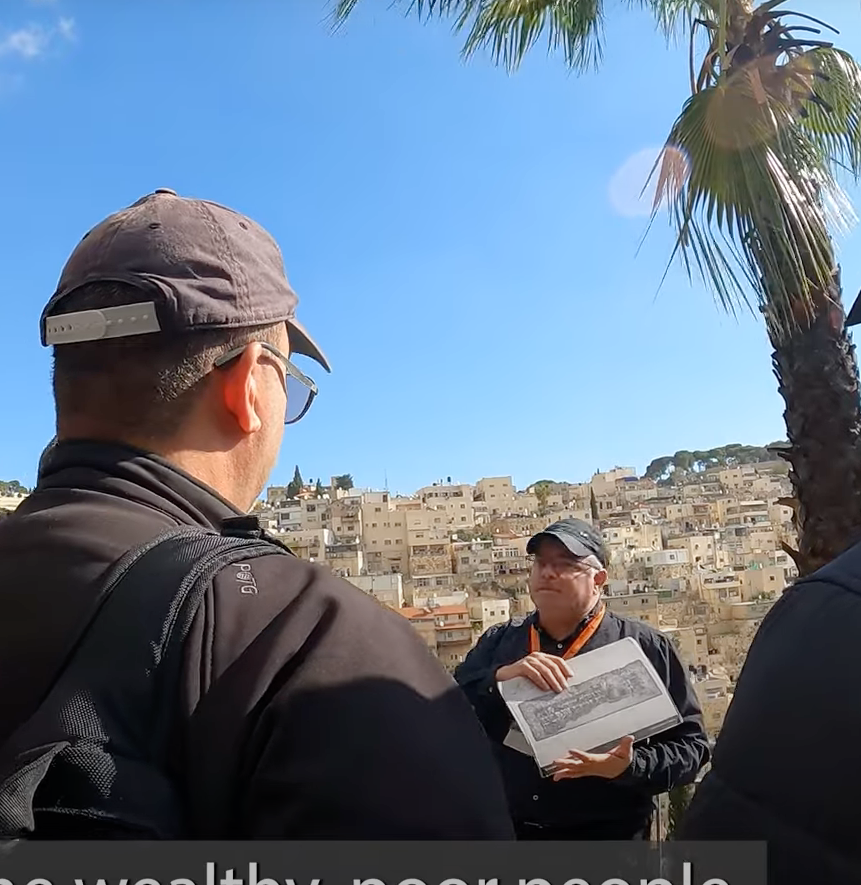
Kathleen Kenyon Wall
Destroyed 586 BCE
Original wall from the first temple period.
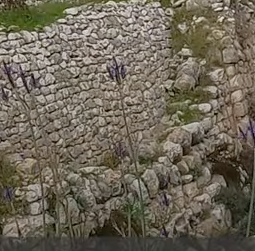
Warren Shaft
c. 1200 BCE
Vertical shaft near the Gichon Spring, the main source of water in Bronze and Iron Age Jerusalem. wonderful water walk and excellent excavations for touring.
The Shiloah Inscription
c. 700 BCE
An inscription celebrating the remarkable achievement of the ancient world of digging a tunnel in the ancient city of Jerusalem. It mentions Israel and Judah specifically and is written in a paleo Hebrew Alphabet.
More about the Siloam Inscription

The Broad Wall (of King Hezkiyahu?)
late 800 BCE
The impressive Broad Wall, also known as HaChoma HaRechava in Hebrew, stands as a testament to the ancient defensive structures in Jerusalem's Old City, specifically in the Jewish Quarter. Unearthed by the skilled Israeli archaeologist Nahman Avigad in the 1970s, this remarkable wall has been dated back to the reign of King Hezekiah in the late eighth century BCE.
Boasting a formidable thickness of seven meters, the Broad Wall stretches an unbroken length of 65 meters, or approximately 71.1 yards, with certain sections reaching a towering height of 3.3 meters, or 3.6 yards. Avigad's excavation work not only shed light on the city's historical boundaries but also unveiled a surprising expansion during the late eighth century. Contrary to the long-held belief that the city was confined to the fortified hill south of the Temple Mount, known as the City of David, the discovery showed that the city had grown to encompass the western hill of the Temple Mount as well. This expansion was likely motivated by Sennacherib's campaign in Judah, further highlighting the strategic importance of the Broad Wall.
Interestingly, references to the Broad Wall can be found in biblical passages such as Nehemiah 3:8 and Isaiah 22:9-10, further emphasizing its historical significance. Unveiling the mysteries of the past, the Broad Wall stands as a formidable testament to the rich history of Jerusalem and its enduring legacy.
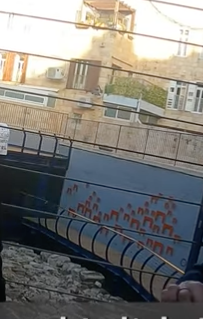
Ancient Walls Beyond South of the Old City
c. 300 BCE?
Multiple walls from multiple eras and an ancient garbage dump that is often a place for amateur archeologists to participate in a dig.
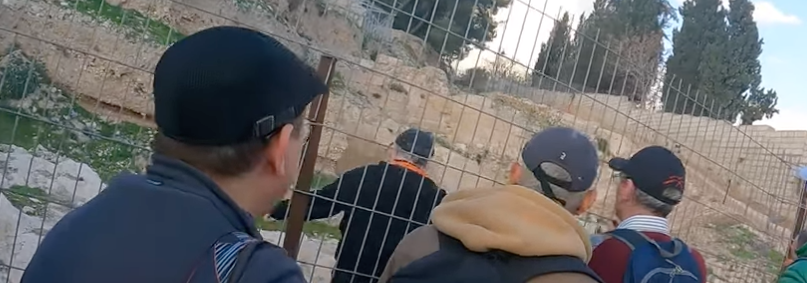
Menachem Begin Center - Site of Discovery of Ancient Relic of the First Temple Period - Ketef Hinnnom
c. 1000 BCE
Ancient burial site and place of a tomb discovered to contain a silver scroll pendant now called the Ketef Hinnom. The scroll was deciphered to contain the inscription of a blessing written in Numbers 6:24-26, also called Birkat Kohanim.



